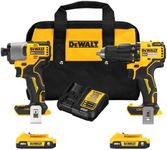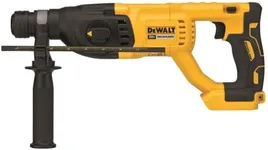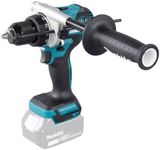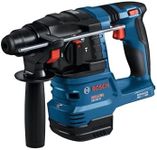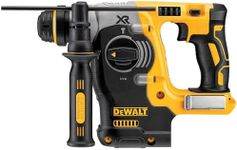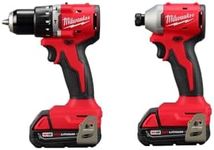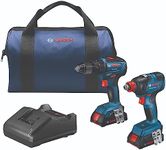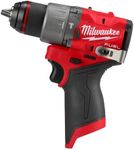Buying Guide for the Best Cordless Hammer Drills
Choosing the right cordless hammer drill can make your DIY or professional projects much easier and more efficient. The key is to match the drill’s features to the types of tasks you plan to tackle, whether it’s drilling into wood, metal, or tough materials like concrete. Understanding the main specifications will help you find a drill that feels comfortable, lasts long enough for your jobs, and delivers the power you need without being unnecessarily heavy or complex.VoltageVoltage refers to the power output of the drill’s battery and is a good indicator of how much force the drill can deliver. Lower voltages, like 12V, are lighter and suitable for light-duty tasks such as assembling furniture or drilling into soft wood. Mid-range voltages, like 18V or 20V, offer a balance of power and weight, making them versatile for most home and professional uses, including drilling into masonry. Higher voltages, above 20V, are typically reserved for heavy-duty work and can be heavier and more tiring to use. To pick the right voltage, consider the hardest material you’ll regularly drill into and how often you’ll need to use the drill for extended periods.
Battery Capacity (Ah)Battery capacity, measured in ampere-hours (Ah), tells you how long the drill can run before needing a recharge. Lower capacities, like 1.5Ah, are lighter and fine for quick jobs, while higher capacities, such as 4.0Ah or more, allow for longer use between charges but add weight. If you plan to use the drill for long sessions or on big projects, a higher capacity battery is helpful. For occasional or short tasks, a lower capacity battery keeps the tool lighter and easier to handle.
Hammer Action (BPM)Hammer action, measured in blows per minute (BPM), is what allows the drill to punch through hard materials like concrete or brick. A higher BPM means the drill can deliver more impacts per minute, making it more effective for masonry work. For mostly wood or metal tasks, hammer action is less important, but if you expect to drill into concrete or stone, look for a drill with a high BPM rating. Choose based on the toughest material you expect to encounter.
Chuck SizeThe chuck size determines the maximum diameter of drill bits you can use. Common sizes are 3/8 inch and 1/2 inch. A 3/8 inch chuck is lighter and suitable for most household tasks, while a 1/2 inch chuck can handle larger bits for heavy-duty work. If you plan to use large bits or do a lot of masonry drilling, a 1/2 inch chuck is more versatile. For lighter, everyday tasks, a 3/8 inch chuck keeps the drill more compact.
Speed SettingsSpeed settings allow you to control how fast the drill spins. Single-speed drills are simple and good for basic tasks, while two-speed or variable-speed drills offer more control for different materials. Lower speeds are better for driving screws or drilling into hard materials, while higher speeds are useful for drilling into wood or soft materials. If you want flexibility for a range of tasks, look for a drill with multiple speed settings.
Weight and ErgonomicsThe weight and design of the drill affect how comfortable it is to use, especially for long periods or overhead work. Lighter drills are easier to handle but may have less power or battery life. Ergonomic features like a comfortable grip and balanced weight distribution can reduce fatigue. Consider how long you’ll be holding the drill and whether you need to use it in tight or awkward spaces when deciding on the right weight and design for you.

